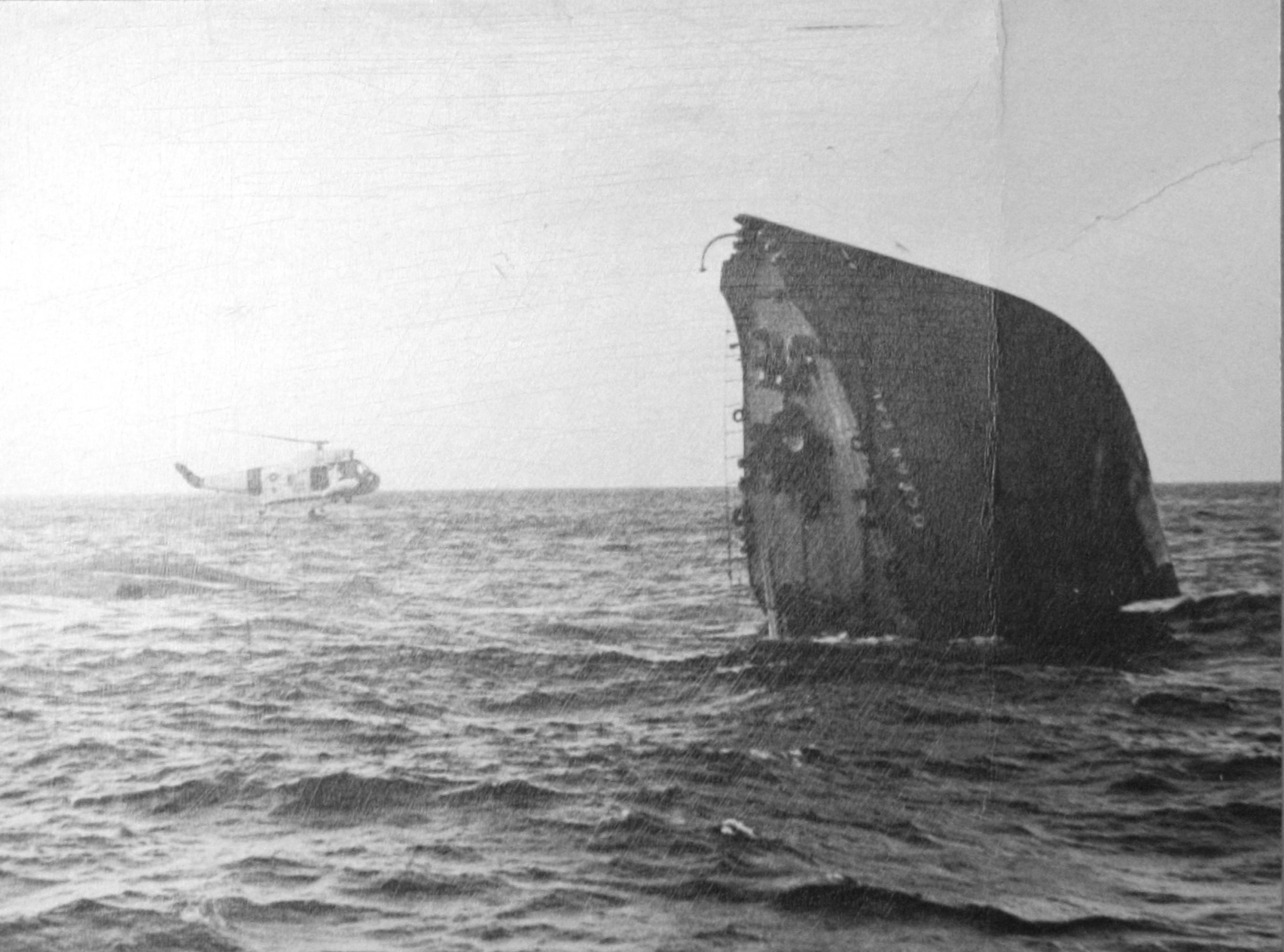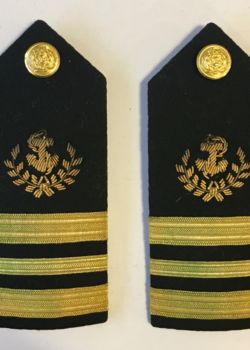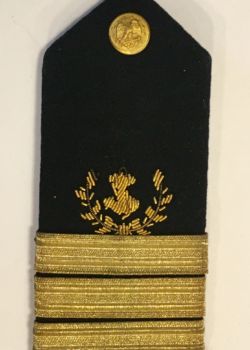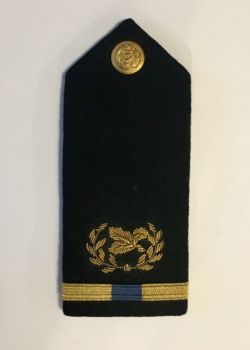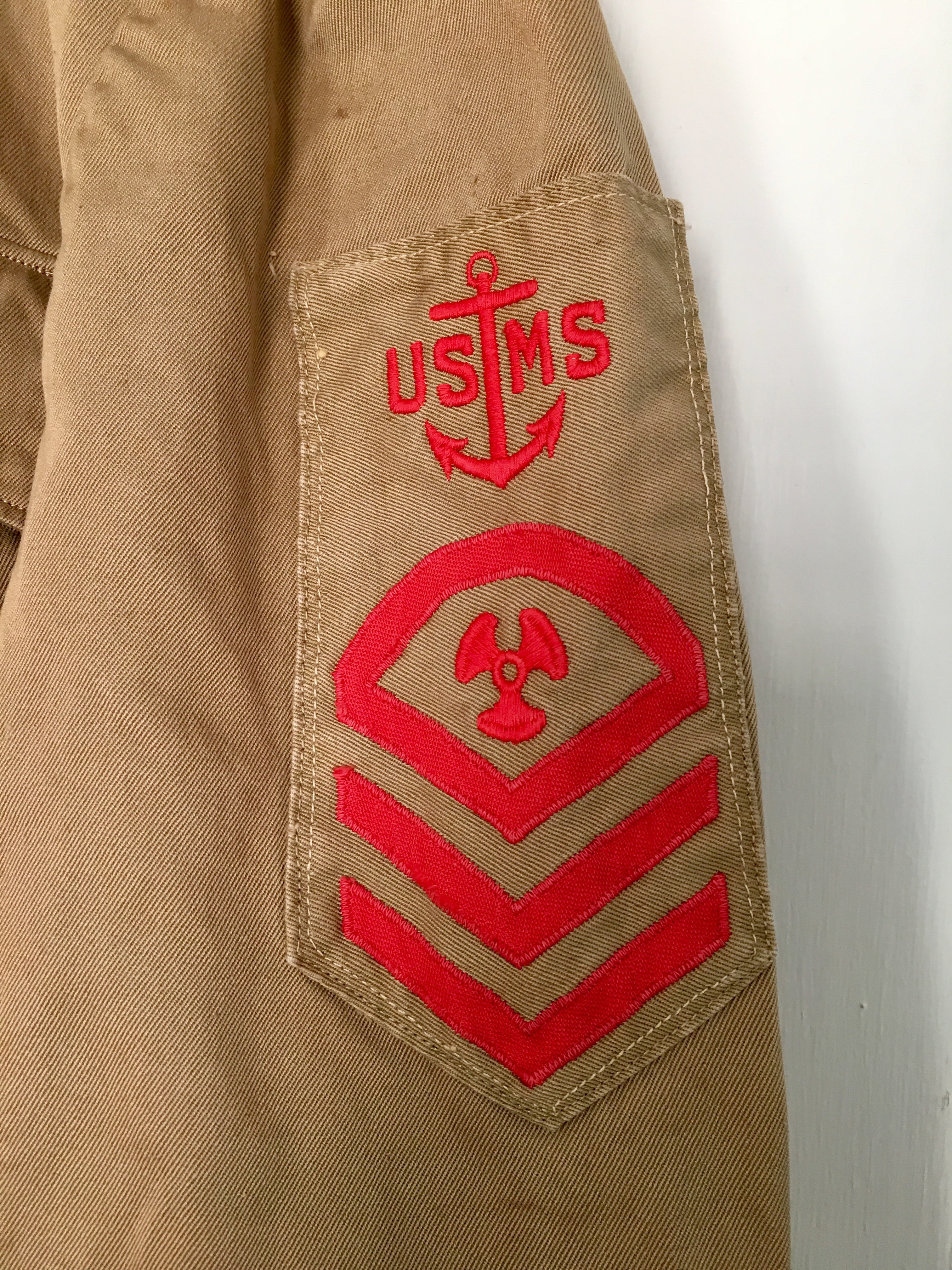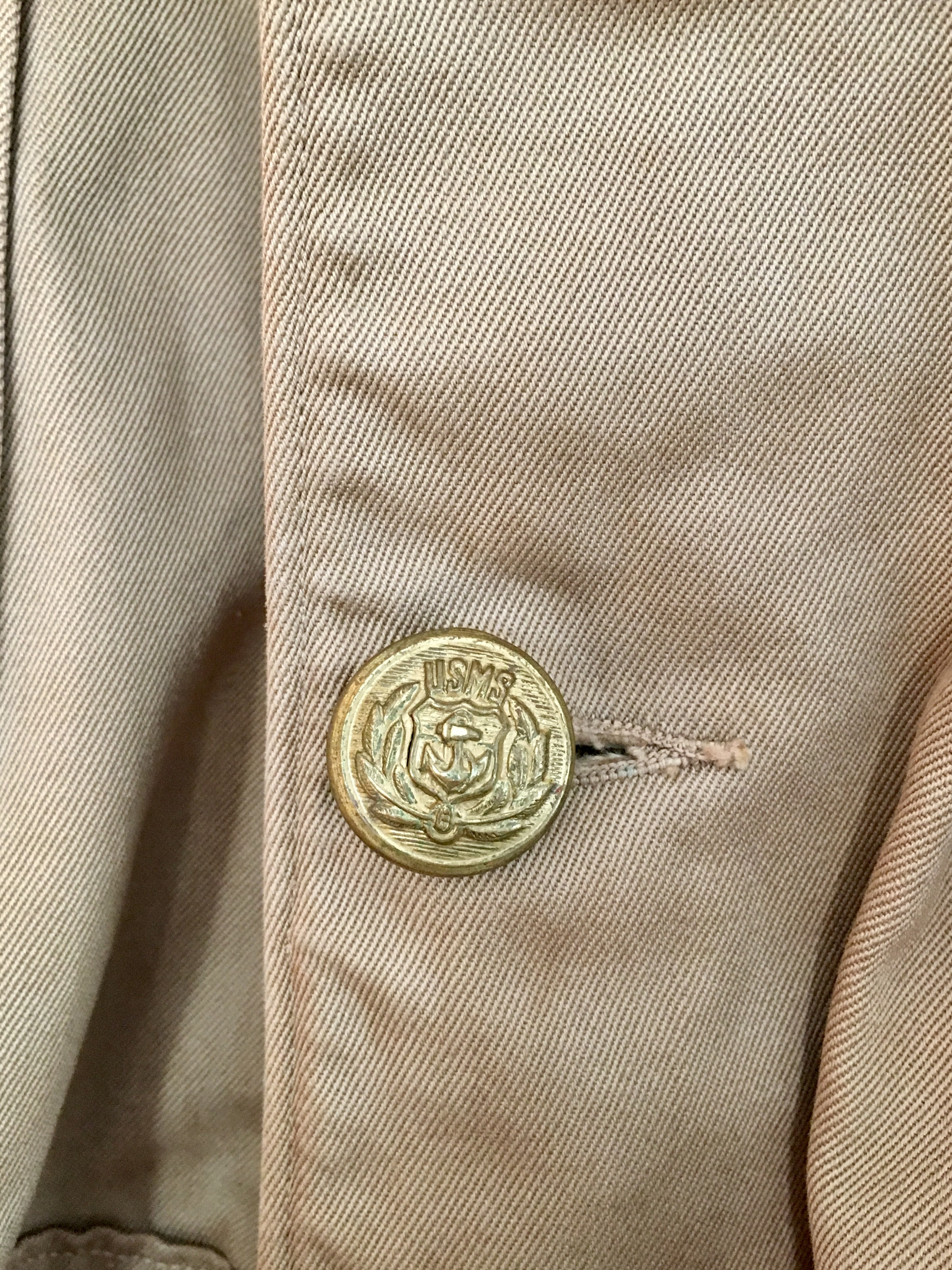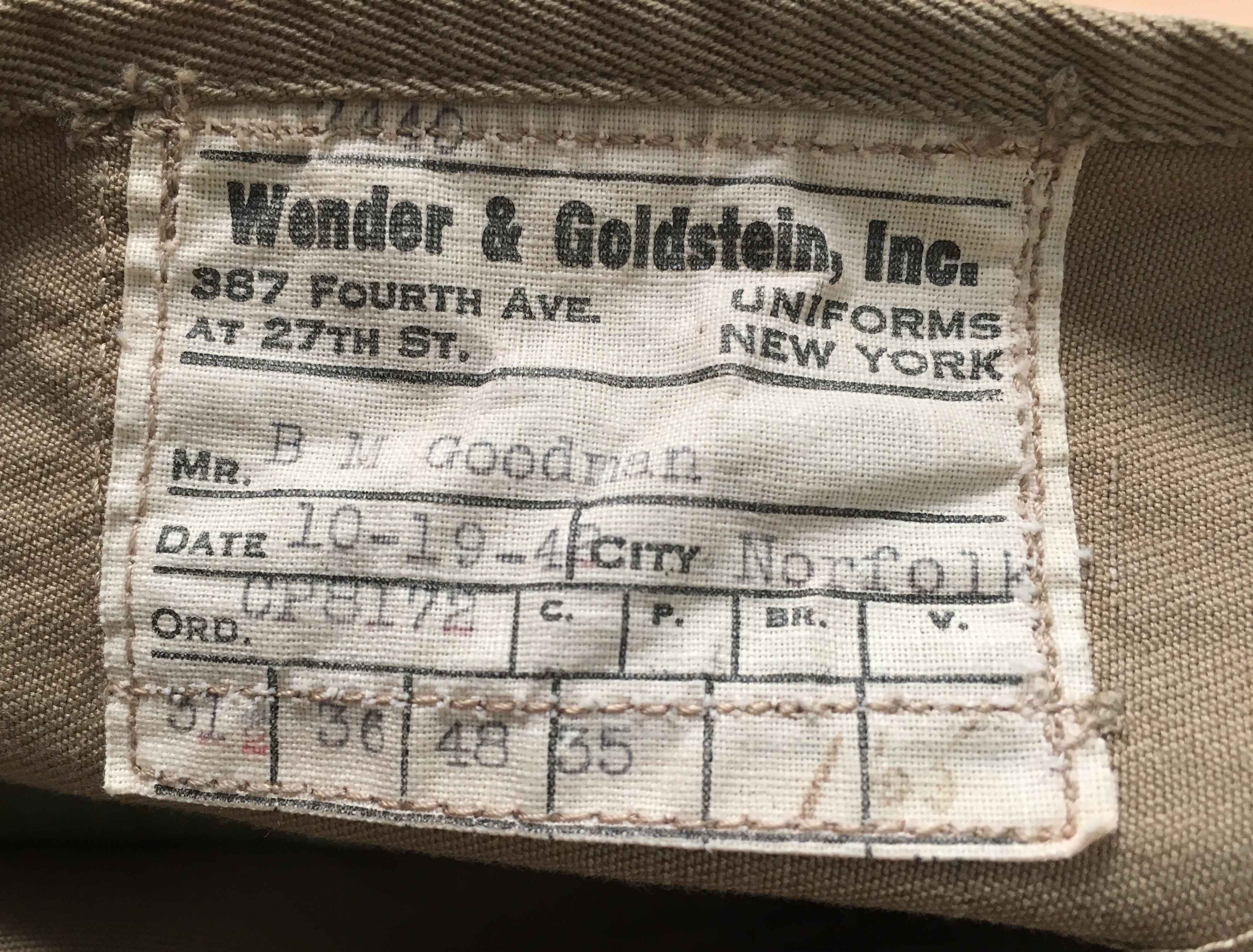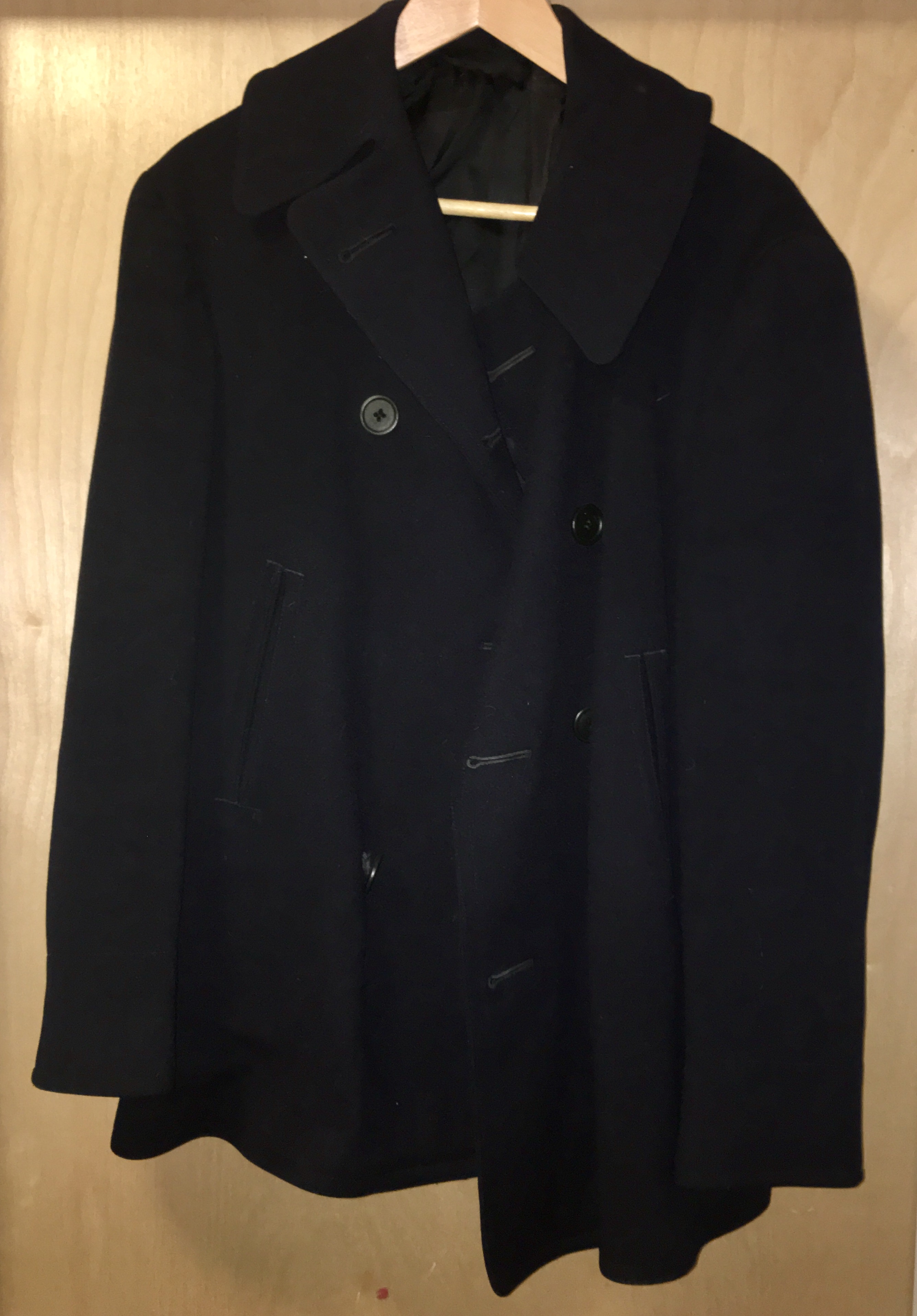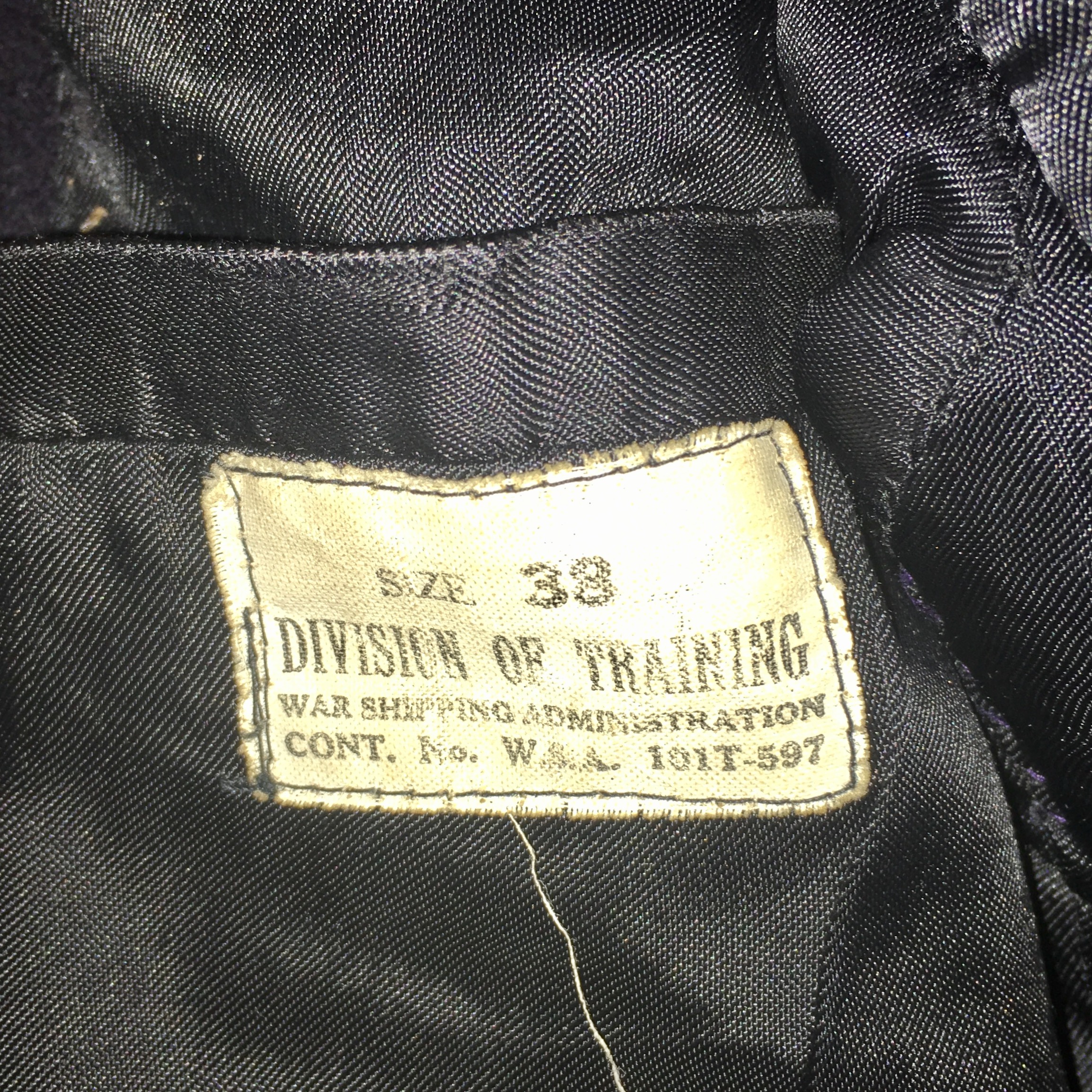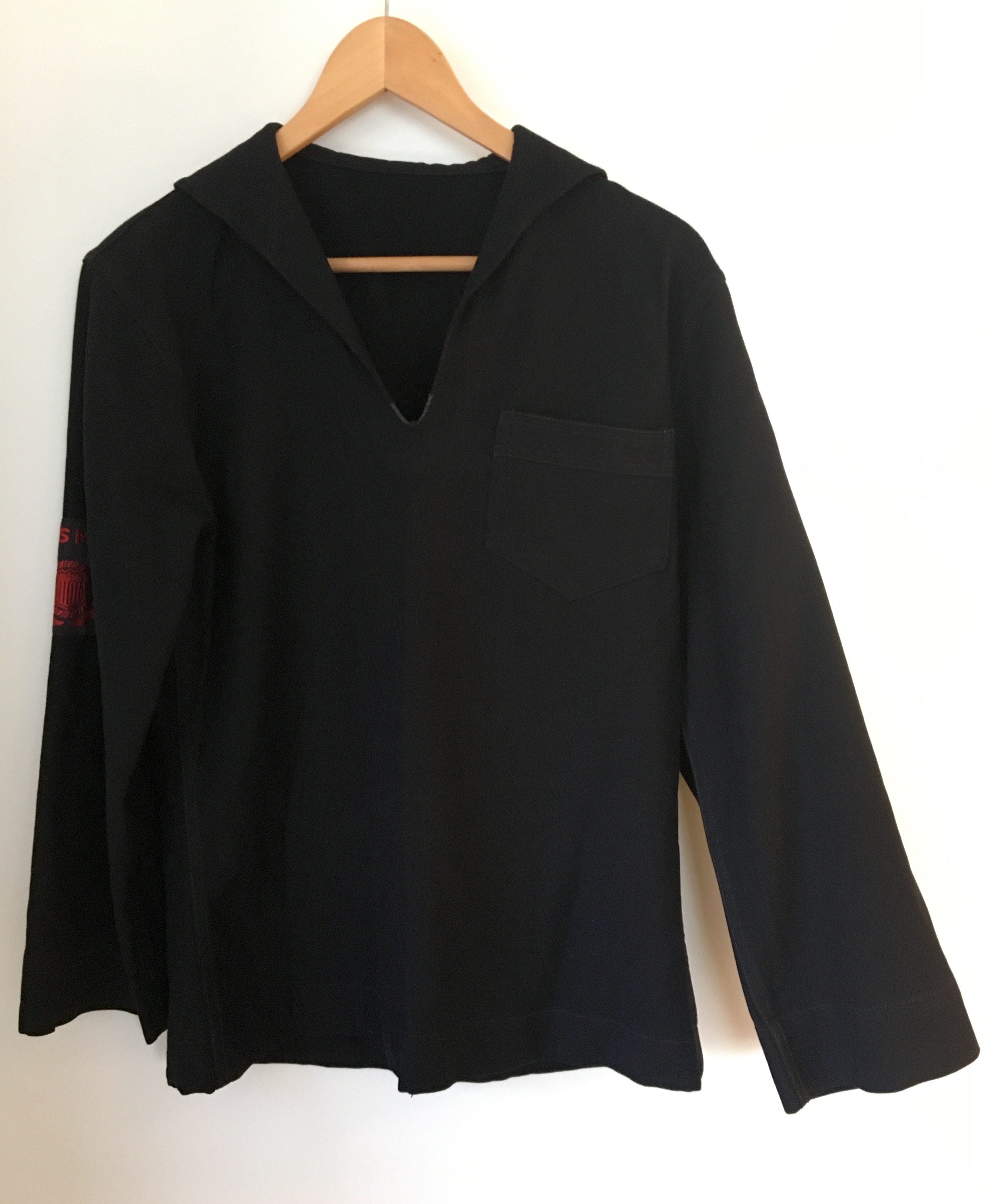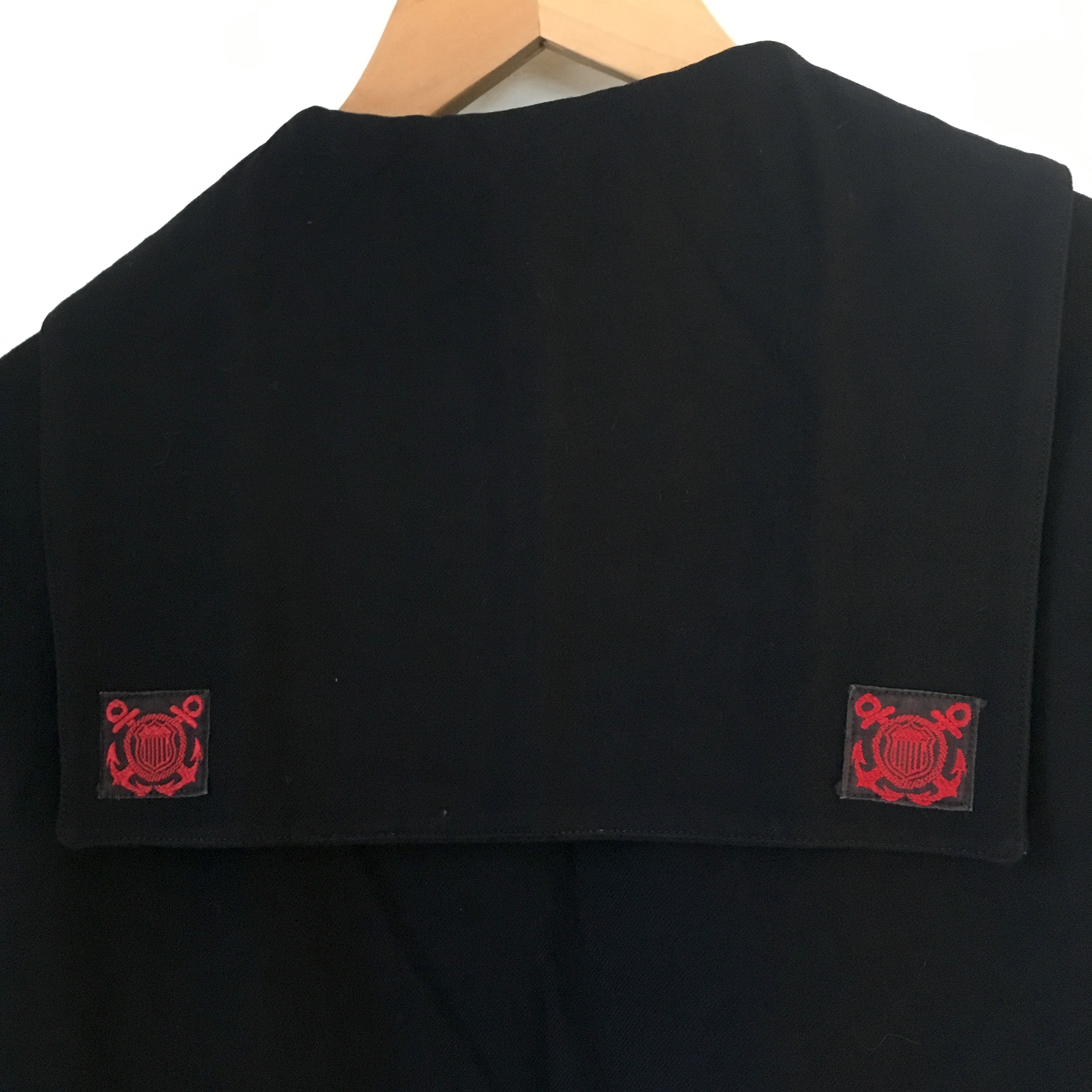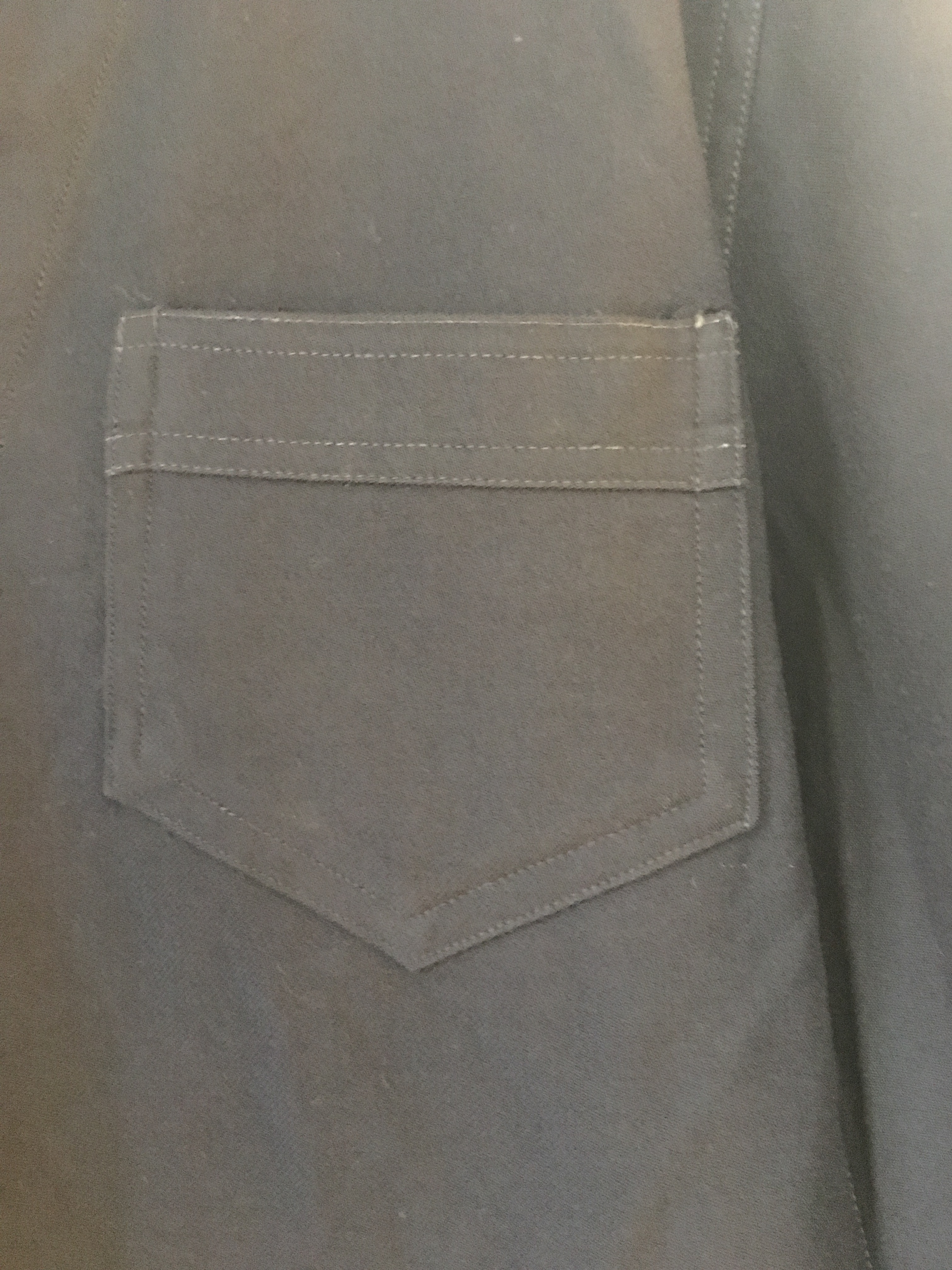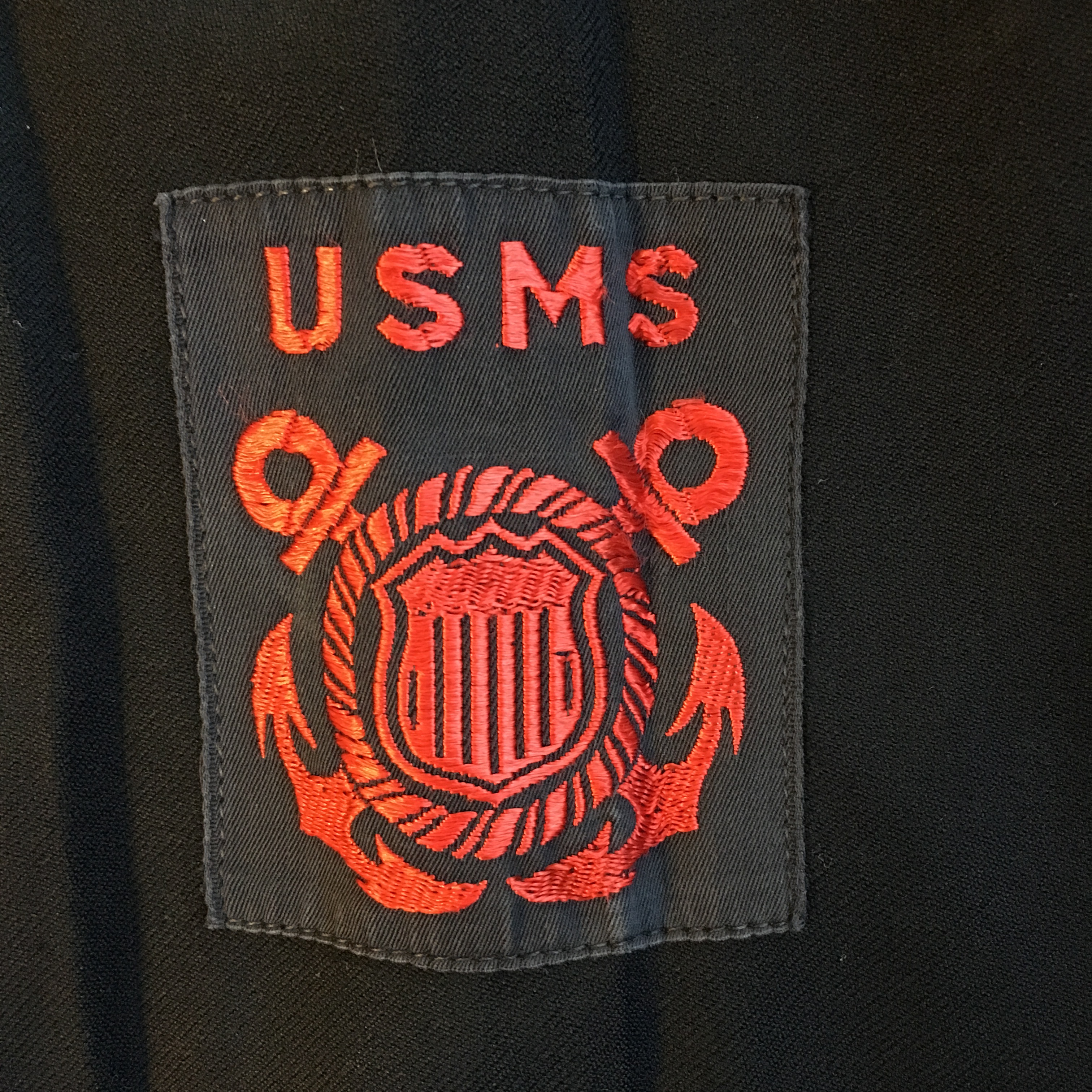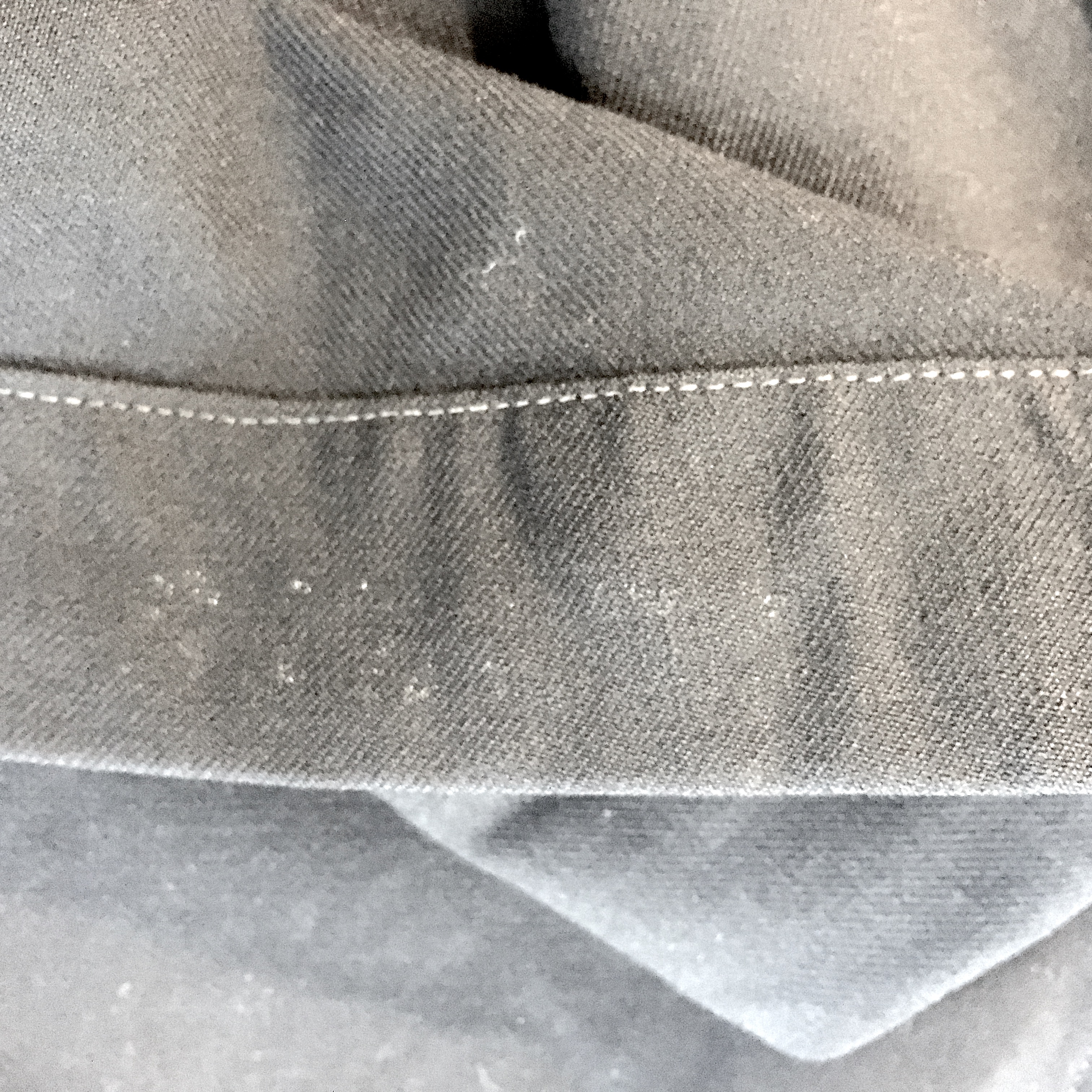 | Baker
Bkr | Measures and mixes ingredients, forms dough, operates ovens and other baking apparatus, and produces bread, rolls, cakes, pies, and pastries; may instruct trainees in baking procedures and practices.
Petty Officer 1st, 2nd, & 3rd Class only. Commissary and Steward Branch. |
 | Boatswain’s Mate
BM | Supervises seamen in the performance of deckhand duties, such as marlinspike seamanship, cargo handling, ship maintenance, lowering and handling of lifeboats, and operation of blocks, tackle, stages, rigging, deck machinery, and anchor and mooring gear; may assist in the training of seamen in the above duties.
Petty Officer 2nd Class and above. Seaman Branch. |
 | Boatswain’s Mate A (Master-at-Arms)
BMA | Performs general police duties of a Master-at-Arms and enforces rules and regulations; supervises chow formations, work details, the escorting of sections to classrooms, barracks, and other buildings, &c; takes muster, maintains order and posts fire watches; receives, checks, and records cleaning gear received and keeps logs; supervises entrance and exit of all personnel at the station or ship; assigns barracks, bunks, and lockers; may be assigned to barracks as Master-at-Arms.
Petty Officer 2nd Class and above. Seaman Branch. |
 | Buglemaster
Bgmstr | Trains and supervises buglers and drummers; may act as drum major, leading drum and bugle corps in conjunction with a band on the field playing marches containing bugling.
Petty Officer 2nd Class and above. |
 | Bugler
Bugle | Sounds necessary bugle calls.
Seaman 1st & 2nd Class |
 | Carpenter’s Mate
CM | Uses hand and power woodworking tools to construct, alter, repair, and maintain all structures made of wood, including rough carpentry work, finish carpentry work, cabinet making and joinery; repairs to wooden boats, buildings, furniture, &c; also lays and repairs linoleum; aboard ship sounds bilges, maintains watertight doors, ports, and hatches; and may handle anchor windlass.
Artificer Branch. |
 | Chief Commissary Steward
CCS | Supervises and coordinates activities of the bake shop, galley, and mess hall; plans menus and keeps records; directs cookings and preparation of foods; buys food and directs stowing of provisions; may instruct trainees in food stowage, preparation, issuance, records.
Rank of Chief Petty Officer only. Only Bakers and Cooks may advance to CCS. Commissary and Steward Branch. |
 | Cook
Ck | Prepares food for general or officers’ mess; may plan menus; inspects and stows provisions; operates and maintains all mechanical equipment used in the preparation of food; maintains galley and equipment in a sanitary condition; may instruct trainees in food handling, stowage, and preparation.
Petty Officer 1st, 2nd, & 3rd Class only. Commissary and Steward Branch. |
 | Coxswain
Cox | Performs duties of a boat coxswain during lifeboat instruction periods, instructing in handling sweep oar or tiller, and issuing commands and taking complete charge of the boat; responsible for lifeboat equipment; performs the less responsible and more routine duties of a Boatswain’s Mate.
3rd Class only. Seaman Branch. |
 | Coxswain A (Master-at-Arms)
CoxA | Responsibilities the same as Boatswain’s Mate A.
3rd Class only. Seaman Branch. |
 | Electrician’s Mate
EM | Lays out, assembles, install, test, repairs, and maintains in operating condition, all electrical fixtures, apparatus, equipment, circuits, motors, and wiring; uses wiring diagrams in construction, installation, and repair of equipment; winds armatures, replaces defective wiring, and makes connections for new electric installations; replaces burnt out fuses; replaces small parts on motors, cleans and oils motors, and repairs electrical fixtures.
Artificer Branch, Engine Room Force. |
 | Fireman
F | Under close supervision, performs the more routine and less complex duties of the rating for which he is sticking; is usually assigned to some branch of the engine department, in which he may stand fireroom watches, assist in machine shop, boiler room, engine room, or electric shop; may assist in the practical training of trainees who are assigned to duty in the fireroom.
No rank badge. USMS lacked strikers badges. Firemen are non-rated and hold the ranks of Apprentice Seaman (AS), Fireman 2nd Class (F2C), and Fireman 1st Class (F1C). Artificer Branch, Engine-room Force. |
 | Gunner’s Mate
GM | Instructs trainees in operation, and maintenance and repair of guns and small arms used aboard ship; performs maintenance and repair duties connected with ordnance equipment and supplies used for instruction and security purposes aboard station and training ship; maintains records and prepares reports; supervises air raid practice drills and manning of guns by ship’s company.
Seaman Branch. |
 | Hospital Apprentice
HA | Under close supervision performs the more routine nursing and first aid duties in sick bays and wards; sterilized and prepares equipment; maintains sanitary conditions of sick bay and wards.
No rank badge. USMS lacked an apprentice badge. Hospital Apprentice are non-rated and hold the ranks of Apprentice Seaman (AS), Hospital Apprentice 2nd Class (HA2C), and Hospital Apprentice 1st Class (HA1C). |
 | Machinist’s Mate
MM | Operates, maintains, overhauls, and makes adjustments and repairs on all main and auxiliary engines and machinery powered by steam, including reciprocating steam engines and steam turbines, and their auxiliary engines; may perform engine room watches aboard ship, and performing oiler’s duties; may instruct trainees in the operation and maintenance of external combustion engines and machinery, and watchstanding procedures.
Artificer Branch, Engine-room Force. |
 | Machinist’s Mate S (Shop Machinst)
MMS | Constructs and repairs all kinds of metal parts, tools, and machines; operates machine tools including lathe milling machine, planer, shaper, drill press, bench grinder, and power hack saw; uses hand tools, including scrapers, chisels, files, and measuring instruments; reads blueprints and prepares specifications; may instruct trainees in the operation of machine tools.
Artificer Branch, Engine-room Force. |
 | Metalsmith
M | Repairs piping, draws out, and anneals and case-hardens metals; does all types of welding, brazing and soldering, and heats and shapes metal stock to repair and manufacture tools and parts; lays out metalwork jobs; prepares specifications and time and material estimates.
Artificer Branch. |
 | Motor Machinist’s Mate
MoMM | Operates, maintains, overhauls, and makes adjustments and repairs on engines operated by internal combustion, such as Diesel and gasoline engines; may instruct trainees in the operation and maintenance of internal combustion engines and machinery, and watchstanding procedures.
Artificer Branch, Engine-room Force. |
 | Musician
Mus | Plays one or more musical instruments in the band or orchestra at ceremonies and entertainments, and while marching in military formation; may take charge of band or orchestra; may make musical arrangements or plan programs.
Special Branch. |
 | Painter
Ptr | Prepares, mixes and applies paints on ship or at training stations, using brushes or spray gun; maintains all paint tools and paint lockers; cleans, sands, and finishes wood floors.
Artificer Branch. |
 | Pharmacist’s Mate
PhM | Administers first aid, medications, Wasserman tests, and inoculations; conducts physical examinations, treats minor ailments, performs nursing duties, and assists at operations; compounds drugs, makes laboratory analyses, and assists in hospital administration; maintains medical records and prepares reports; assists in the inspection of galleys and cafeteria; may instruct trainees in first aid and prevention of venereal ‘disease and use of prophylactics; may instruct in Hospital Corps School in duties of a Pharmacist’s Mate aboard ship.
Petty Officer 3rd Class and above. Special Branch. |
 | Photographer’s Mate
PhoM | Operates, adjusts, and maintains photographic equipment; takes pictures, using still and motion picture cameras; does darkroom and related work, developing negatives, and making contact and projection prints.
Special Branch. |
 | Printer
Prtr | Performs any or all of the duties in connection with setting type by hand and operating a platen-type press; assembles type and cuts in chases; makes ready, tends, and supervises feeding of press, inserting forms, adjusting ink rollers and ink flow, and feeding paper into feedboard.
Special Branch. |
 | Printer L (Lithographer)
PrtrL | Performs duties in connection with reproduction of material by the lithographic process; may transfer images from photographic negatives to zinc plates for printing (transferring), or make ready and tend the operation of single or multi-color lithographic press.
Special Branch. |
 | Printer M (Multilith Operator)
PrtrM | Operates a machine (Multilith) that prints from special plates onto a rubber blanket, the ink then being transferred from the blanket onto the blank sheet of paper, (offset principle); prepares process plates, sets up and tends the operation of the machine, adjusting p rin ting plate, ink flow, speed of machine, and paper feed; may also direct operation of duplicating equipment for reproducing typewritten or handwritten matter by forcing ink through a cut stencil onto the sheets of duplicate paper.
Special Branch. |
 | Quartermaster
QM | Stands bridge watch and keeps rough deck log and engine bell book; stands gangway watches in port; corrects and revises pilot charts; acts as helmsman at wheel; maintains physical appearance of bridge; may instruct trainees in steering, watch standing routines, and Rules of the Road.
Seaman Branch. |
 | Radioman
RM | Instructs classes in theory, operation, maintenance, and repair of radio equipment, transmitting and receiving of messages by code, and operation of typewriter by touch method; performs maintenance and repair duties connected with equipment used for instruction and administrative purposes; designs and constructs equipment otherwise unobtainable; may send and receive code messages and repair and maintain radio transmitters aboard training ship.
Artificer Branch. |

 | Seaman
S | Under close supervision, performs ordinary deck duties in connection with the upkeep and operation of a ship; stands wheel and lookout watches and acts as messenger; may perform the more routine and less complex duties of the rating for which he is striking; assists in the instruction of training in deck subjects.
Unless noted, Seamen are non-rated and hold the ranks of Apprentice Seaman (AS), Seaman 2nd Class (S2C), and Seaman 1st Class (S1C). |
 | Shipfitter
SF | Uses hand and machine tools of shipfitter’s shop to lay out metal sheets and sections for repairs to structures on ships and stations; bends, repairs, and fits pipes, tubings and structural sections; does forging and soldering; lays out, assembles and installs pipe, fittings and fixtures for sanitary hea ting> drainage and other piping systems.
Artificer Branch. |
 | Ship’s Service Man B (Barber)
SSMB | Cuts hair, and where facilities permit, performs other barber services; maintains tools and equipment in sanitary and operating condition.
Special Branch. |
 | Ship’s Service Man C (Cobbler)
SSMC | Resoles, reheels, and repairs shoes, rebuilding them when necessary; maintains equipment in operating condition.
Special Branch. |
 | Ship’s Service Man L (Laundryman)
SSML | Marks, lists, and sorts incoming articles; washes and removes stains from clothes and uniforms; operates and maintains washing equipment, extractors, tumblers, presses, and flatwork ironers; finishes, folds, assembles, and packs finished articles.
Special Branch. |
 | Ship’s Service Man T (Tailor)
SSMT | Sews by hand and by machine; makes repairs, sews on rating badges and insignia, and makes alterations; presses garments by hand and by machine, removes spots and stains, and maintains equipment in operating condition.
Special Branch. |
 | Signalman
SM | Instructs trainees in sending and receiving of messages by flaghoist, blinker, semaphore, distress and emergency signals, and any other method used in maritime communications; performs maintenance and repair duties connected with signal equipment; may send and receive signal messages aboard ship.
Seaman Branch. |
 | Special Artificer I (Instruments)
SAI | Repairs office machines such as typewriters and calculators, or watches and clocks.
Artificer Branch. |
 | Specialist (A)
Sp(A) | Performs duties associated with the physical training program; instructs in swimming, calisthenics, gymnastics, or boxing; organizes, leads, instructs and referees games; may organize sports programs.
Special Branch. |
 | Specialist (C)
Sp(C) | Interviews, tests or classifies enrolled personnel; assists in classifying trainees for branch testing and selecting candidates for advanced training.
Special Branch. |
 | Specialist (F)
Sp(F) | Firefighter. This includes men with experience as civilian firemen who are now serving as key men in fire-fighting organizations; operates portable and movable pumping and fire-fighting equipment used to extinguish fires; organizes and directs fire drills; maintains fire-fighting equipment in good repair and operating condition; conducts fire prevention inspections.
Special Branch. |
 | Specialist (I)
Sp(I) | Operates, adjusts, and maintains mechanical tabulation equipment.
Special Branch. |
 | Specialist (M)
Sp(M) | Performs duties associated with the handling of mail; sorts, forwards and distributes incoming mail; sells stamps and money orders; handles parcel post, insured and registered mail.
Special Branch. |
 | Specialist (PR)
Sp(PR) | Performs public relations duties; prepares publicity campaigns and releases.
Special Branch. |
 | Specialist (R)
Sp(R) | Interviews, selects, and processes applicants for training and for administrative duty; verifies credentials and checks qualifications
Special Branch. |
 | Specialist (S)
Sp(S) | Patrols shore and port areas; verifies the right of officers and men to wear Maritime Service uniform and insignia; curbs boisterous activities of Maritime Service personnel.
Special Branch. |
 | Specialist (T)
Sp(T) | Performs duties in connection with instruction in technical fields; performs duties such as the following: teaches or tests enrollees in basic, preliminary, and specialized fields, or develops educational materials.
Special Branch. |
 | Specialist (TR)
Sp(TR) | Operates transportation vehicles; including station wagons, trucks, tractors, buses, cranes, etc.; maintains vehicles and makes routine repairs.
Special Branch. |
 | Specialist (W)
Sp(W) | Assists chaplain with clerical work connected with religious and social welfare activities; assists at religious services.
Special Branch. |
 | Specialist (X)
Sp(X) | Specialists not elsewhere classified who perform any of the following duties: (1) developing and constructing training aids, (2) preparing blueprints, (3) supervising the operation of the telephone switchboard, (4) landscaping and gardening, (5) producing creative art, (6) operating Vari-typer, or (7) performing editing duties.
Special Branch. |
 | Steward
St | Serves and directs serving of food in officers’ mess; supervises preparation of salads, sandwiches, and beverages; does short-order cooking; plans menus, keeps records and makes required reports; supervises steward’s mates in cleaning and maintaining officers’ quarters; may instruct trainees in duties of a messman and steward aboard ship.
Commissary and Steward Branch. |
 | Steward’s Mate
StM | Serves at table; takes care of officers’ quarters and laundry; assists cooks, ship’s cooks, and stewards in performance of more routine duties requiring little skill.
Commissary and Steward Branch. |
 | Storekeeper
SK | Keeps records and performs clerical, filing, and typewriting duties; makes entries in records; requisitions, receives, stows, and issues stores; checks invoices and takes inventories; prepares correspondence; in Disbursing Department, computes pay, prepares pay lists and tax records, maintains financial records, prepares financial records, prepares financial statements, and prepares vouchers for, or makes payments in cash to member of ship’s company and trainees; in the Supply Department, Commissary Department, Ship’s Service Store, or Clothing Locker, receives, checks, and stows stores; issues or sells gear and small stores; maintains and periodically takes inventories, and keeps records of all transactions.
Special Branch. |
 | Water Tender
WT | Stands watches, maintaining water level in boilers, and directing firemen in their duties; operates, maintains and repairs boiler room equipment, including pumps, condensers, valves, manifolds, strainers, heaters, control valves, atomizers, and regulating valves; may instruct trainees in fireman and water tender duties aboard ship.
Artificer Branch, Engine-room Force. |
 | Yeoman
Y | Performs typing, stenographic, clerical, filing, and other office duties.
Special Branch. |

